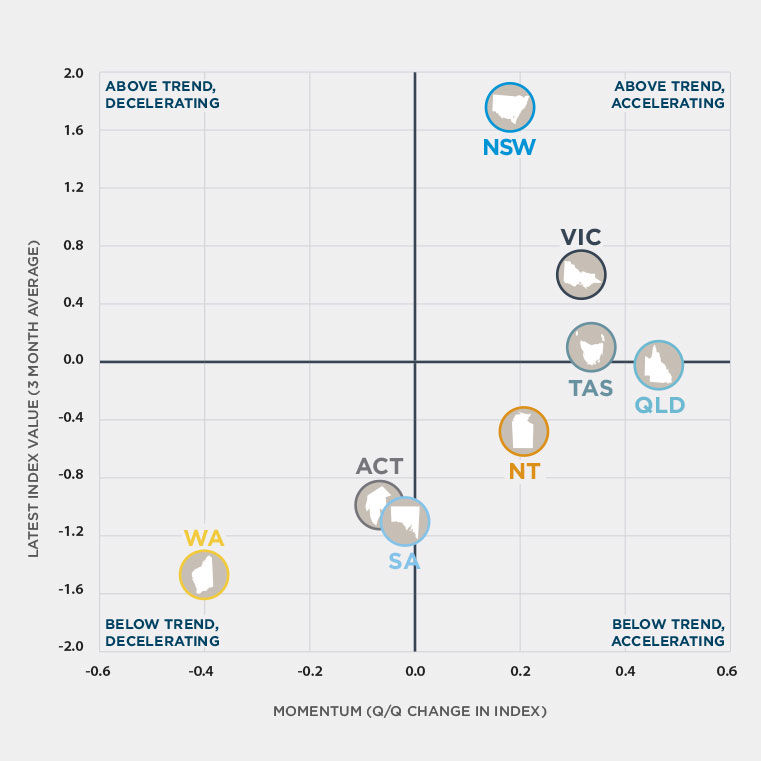New South Wales, Victoria and Queensland are all at multi-year highs for economic activity according to the latest ANZ Stateometer on the back of improved nation-wide business conditions, but downside risks still remain.
NSW remained ahead of the pack over the three months to October, with economic activity well above its long-run average although its pace of growth has slowed a little as some indicators begin to turn. Activity in Victoria and Queensland improved solidly and Tasmania has been a quiet achiever, edging further into the upper right quadrant of the Stateometer, indicating growth.
Still-strong residential construction activity, services-led employment growth, buoyant business conditions and pockets of commercial property activity have been the key ingredients to NSW and Victoria’s performance. These sources of growth are also becoming more apparent in Queensland and Tasmania.
It does not mean, however, the economy is without downside risks. The housing outlook is weakening with softer price growth and construction activity is levelling off. This will particularly impact NSW and Victoria where property market activity has been a strong support to growth. It is also likely the lower Australian dollar won’t provide the same assistance next year as it did in 2015.
Conditions in Western Australia and South Australia remain weak, with economic activity in WA contracting further. Economic activity in the Northern Territory was more-or-less unchanged, with construction remaining a key support. A fiscally restrained Commonwealth Government (compared to pre-GFC) continues to be a chief concern for the ACT.
The ANZ Stateometer is an indicator that synthesises a large volume of monthly data to give our clients a one-stop-shop for current state and territory economic conditions.
We’ve included 16 economic indicators that cover labour market conditions, household and business activity and prices and analysed them using a statistical technique called principal component analysis. PCA allows us to reveal common trends in the data, and in our case, the underlying pulse of domestic economic activity for each state and territory.



